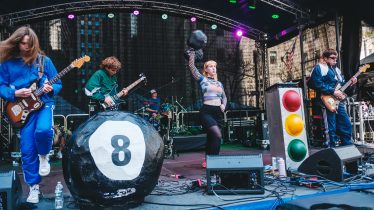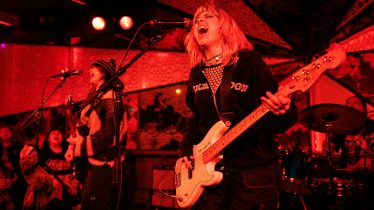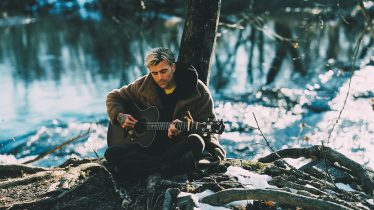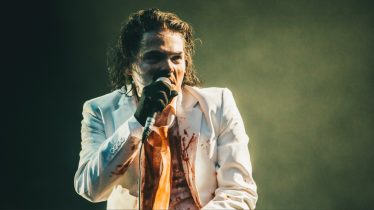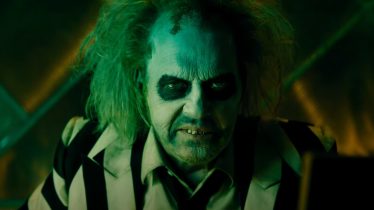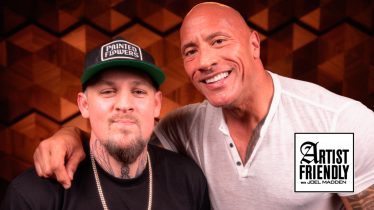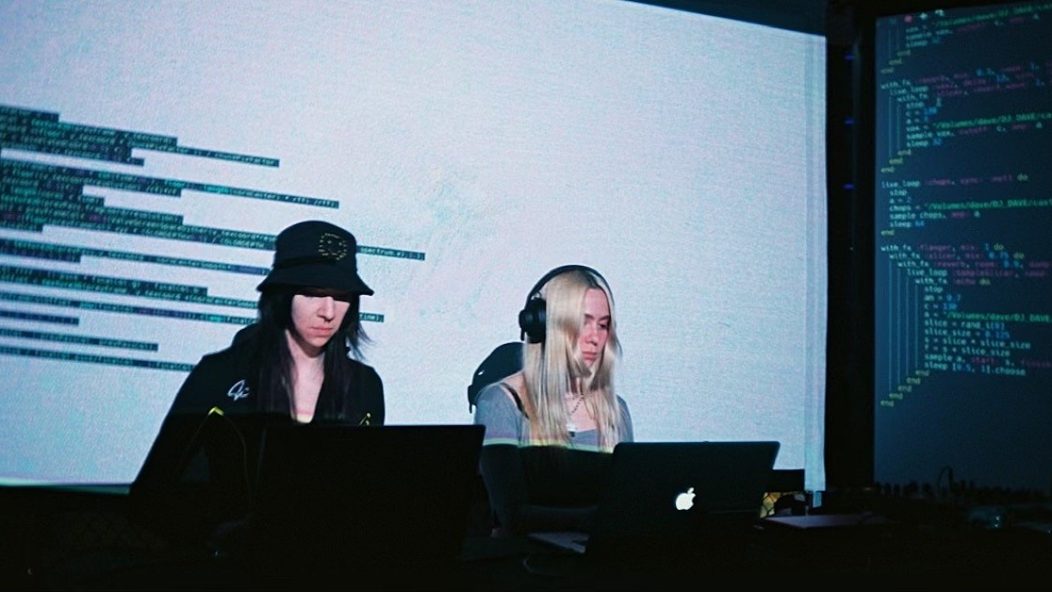
At Brooklyn algoraves, you can dance to music while it's being coded live
Welcome to Scene Report where we highlight significant, underground scenes and subcultures across the globe.
Picture this: You walk into a club and see someone in front of a computer. Behind this person is a projector screen displaying code that they are feverishly typing to create musical sounds and visual effects in real-time.
What you’re witnessing is live coding music. It’s a performance art that involves arranging a set of electronic music — techno, trance, ambient, or even classical — in front of an audience using code, with the process displayed in the background. After originating in the U.K., this act of manipulating algorithms to produce sound has found its way to the U.S. There’s even a thriving scene in New York City, specifically Brooklyn, where people can attend “algoraves” to see an entire lineup of music coded live, often paired with visuals, on a semi-regular basis.
“It’s another way of making electronic music live,” says Kate Sicchio, a founding member of the group that started it all in Brooklyn, LiveCode.NYC. “One of the things that I like about live coding is that there is this aspect of public thought or a transparency to it that lets you see the process of the music, just as much as listening to the music.”
Read more: How Philadelphia Became an Epicenter for Rock Music in the U.S.
LiveCode.NYC formed to foster a community of coders who learn from each other and host algoraves, explains Sicchio, who specializes in creating choreography, rather than music, with code and currently teaches it at Virginia Commonwealth University.
Around her kitchen table in Bushwick in 2016, Sicchio and some friends hunched over their laptops and practiced live coding together for the first time. Now, LiveCode.NYC has a slightly higher profile, hosting over a dozen algoraves at a handful of DIY venues in Brooklyn last year, and nearly as many meetups for members to practice live coding together at the Brooklyn Public Library.
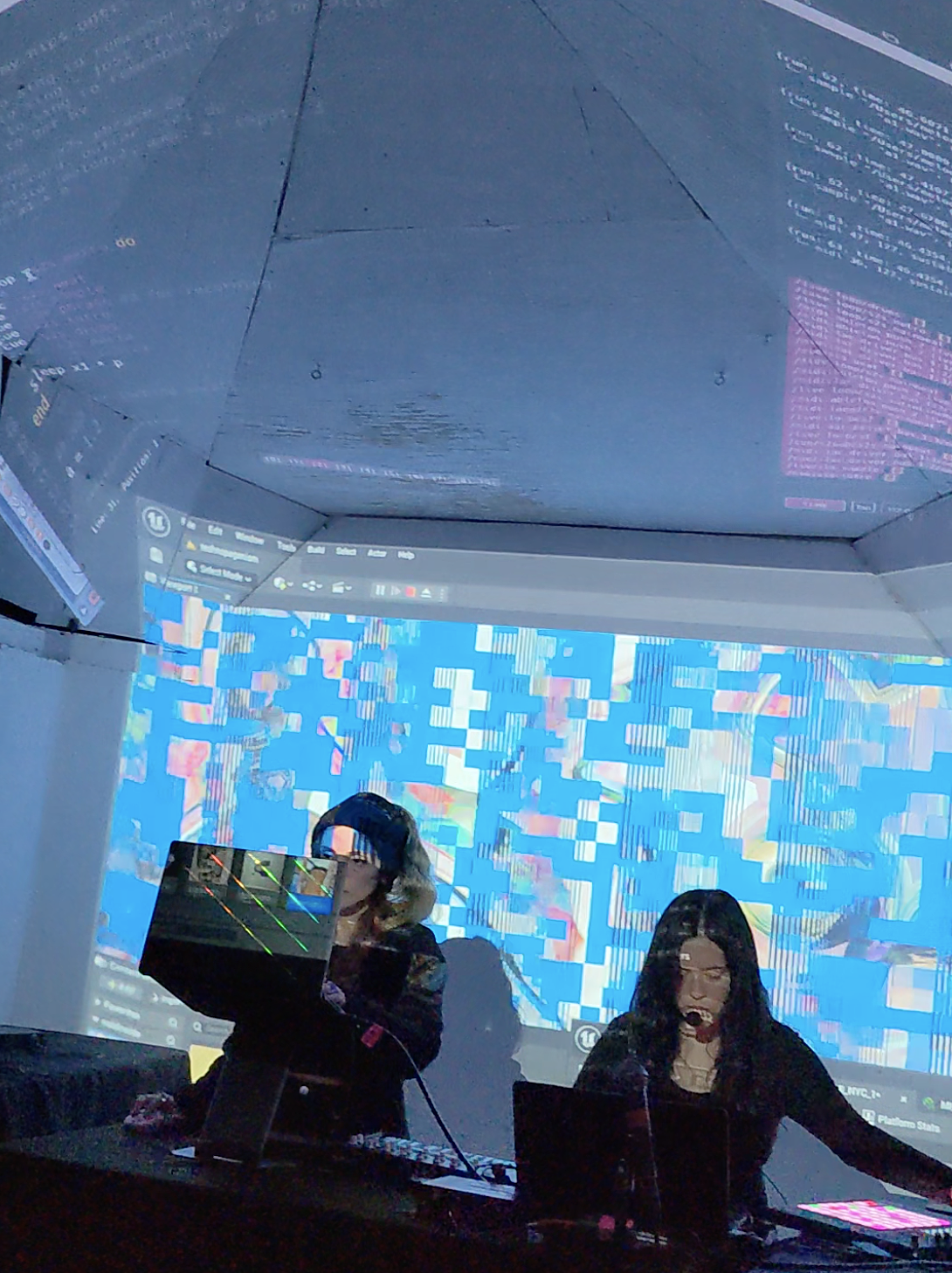
[Indira Ardolic and Melody Loveless at Wonderville / Photo by Cameron Alexander]
Roxanne Harris, a live coder born and raised in Queens, says she found her way to the group after speaking to Sarah Davis, aka DJ_Dave, one of LiveCode.NYC’s most visible producers today. Davis pointed her to a Discord server that was created for members to meet virtually during the pandemic.
Established live coders turned to this Discord to host virtual algoraves when they weren’t able to gather at DIY spaces like Wonderville in Bushwick, says Gwen Pasquarello, a visualist with LiveCode.NYC who maintains the server. This online presence raised LiveCode.NYC’s profile among some people who weren’t as familiar with the practice, piquing the interest of newcomers who wanted to learn and ultimately perform musical compositions with code. While hundreds of people have joined the server, there are about 30 active members in 2023, Pasquarello says.
Harris, who studied computer science at Yale and is a formally trained jazz saxophone player, says she really enjoys the improvisational nature of live coding. “I don’t really know what it’s going to sound like in the end,” says Harris, who, about two years after joining the group, performed at SXSW earlier this month. “I’m just making decisions on the fly so I can really lead to something emerging that I couldn’t have expected or couldn’t have known beforehand, which is really fun.”
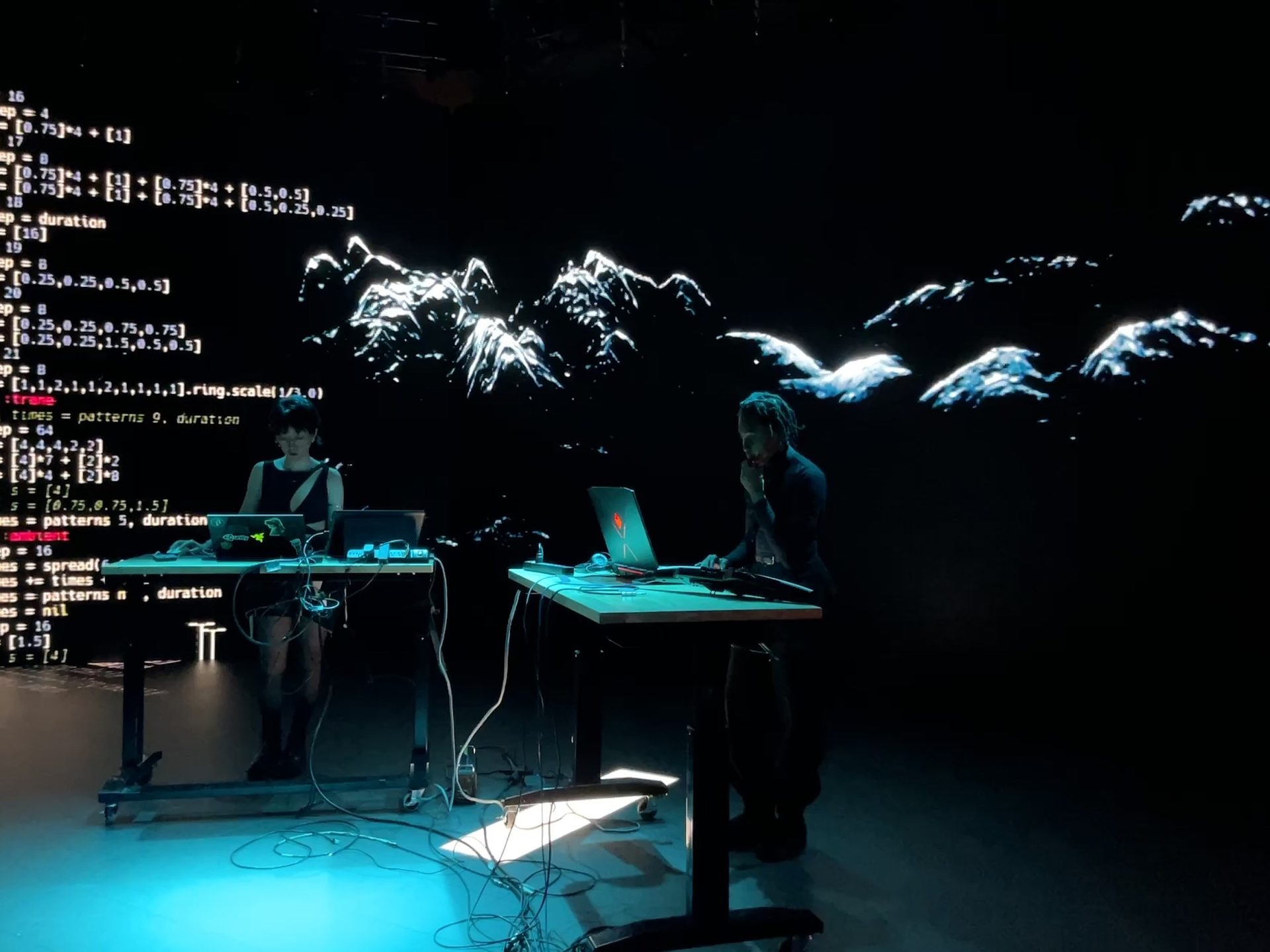
[alsoknownasrox / Photo by Viola He]
Before live coding existed stateside, it got its start in Sheffield, which has a long history of influencing the U.K. electronic music scene. Sicchio was living and studying there when she met Alex McClean “who coined the phrase algorave,” developed the practice, and helped to inspire its growth. “There’s always been a big scene there because there’s a lot of people who are interested in open-source computing and open-source programming,” she says. “Most, if not all, live coding languages and environments that are out there are open-source, free technologies.”
In a similar spirit of openness, the algoraves hosted by LiveCode.NYC are often known as “open call,” meaning any live coder who wants to be on the lineup can sign up. There’s no inherent hierarchical structure at these performances, Harris explains — a window that helped her get to where she is today.
“I got introduced to a lot of people and they knew what I was doing and they were super open to me,” Harris says.
Live coding in the U.S. has deep ties to academia. Even before universities like New York University and The New School began teaching it in their classrooms, Sicchio taught middle schoolers the ways of the algorave. In fact, the first algorave was put on by middle school students at a progressive school in New York, where Sicchio taught live coding as an elective class. They performed at a school dance.
“Teaching coding through music is so much easier, because there’s this immediate output with it,” Sicchio says. “It’s like a payoff when you can make something cool with it.”
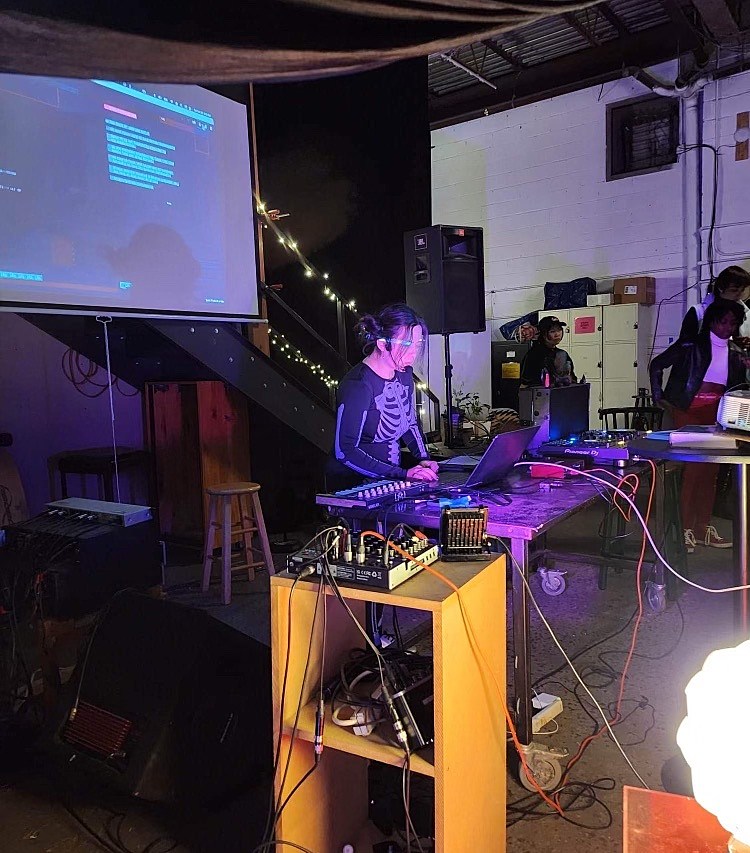
[Melody Loveless at Hex House / Courtesy of Melody Loveless]
So, how exactly does it work? Melody Loveless, a former student of Sicchio’s at NYU who now teaches a live coding course there herself in the engineering school, explains it all starts with Sonic Pi — a code-based synthesizer that uses the open-source programming language Ruby.
“It starts with creating a library, or a series of instructions to give to the computer. What you can do is type these instructions, for example, say, ‘Play this note,’ or, ‘Rest for this long,’” she says. “A lot of it is learning these commands and instructions and the different ways to play back the sound, or change the visual.”
Outside of teaching, Loveless, who has a background in percussion and also teaches live coding at The New School and Hunter College, has been involved with LiveCode.NYC for some time. She’s performed in a live code band with Sicchio and visualist Sarah Groff Hennigh-Palermo. Now, she focuses on her live vocal-processing project in which she records her voice, plays it back as a sample, and manipulates it in real-time with Sonic Pi. She’s also part of a newer project, a duo called Mylar with percussionist Caitlin Cauley.
“When we jam, she’s doing her thing and I’m sampling her in real-time instead,” Loveless says.
DJ_Dave, a prominent live coder to emerge from the New York scene, started school for fashion at Parsons. A class called “Algorave” that Davis says she randomly signed up for is what sent her down her current path. She’s now making a portion of her living off of live coding in settings other than the typical algorave.
Creating music with code appeals to the more analytical side of her brain. “It makes the most sense to me. I like to make music in this organized, mathematical way where there’s answers to things,” she says. “I’m making music that sounds like other people’s music, but the whole process is so much more geometric — literally.”
Davis, who codes music that tends toward pop, is often on lineups where she’s the only person live coding. She also does DJ sets where she switches between coding and traditional mixing.
“I think it’s really cool that I’m showing people that you can mix the two together, and that it’s a medium of making music, rather than a genre that needs to keep to itself,” she says.
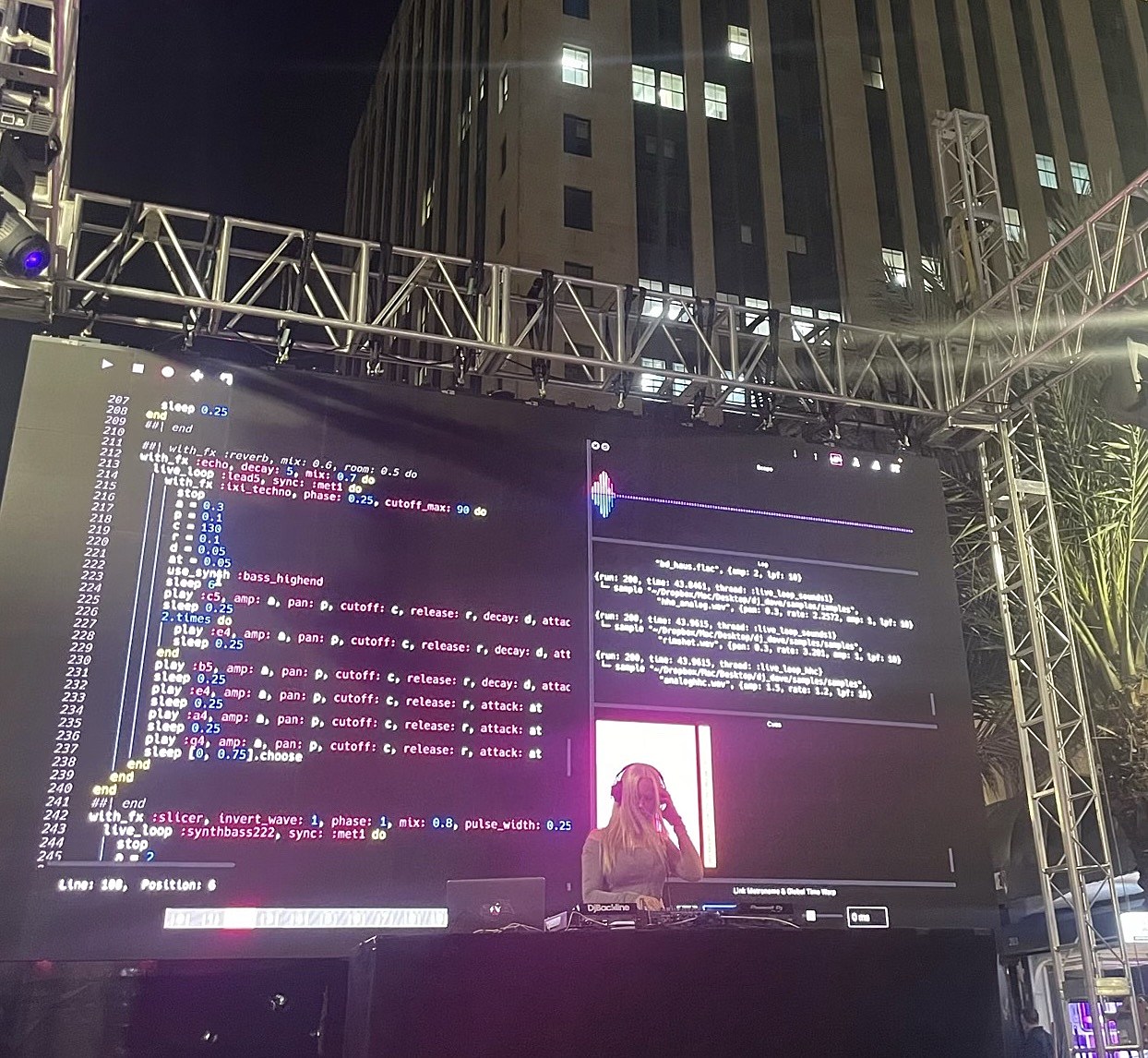
[DJ_Dave / Photo by Hannah Hicks]
Char Stiles, a visualist who has performed alongside DJ_Dave and another member of LiveCode.NYC, says performing outside of the typical algorave has made her appreciate how the live coding community respects the visual aspect as much as the sonic one. “We performed at Electric Forest and SXSW, and some other bigger shows, and I’m really seeing how much [in those spaces] I am considered just a lighting person,” Stiles says, despite developing 3-D graphics live during sets. “It’s been a huge shift and it’s made me appreciate the live code scene and how much visualists are appreciated for what they bring to a performance.”
While algoraves continue to happen at the DIY venue Wonderville, Stiles staked out new territory at a warehouse space in East Williamsburg called Hex House. The venue, which she and a few other players in the scene opened in April 2022, provides a space for live coding and other DIY performances. It’s a collective that invites people to apply to be a part of its community, offering studios for rent to artists of many disciplines — including woodworking.
“We are coders, poets, and artists,” Stiles says. “People here work on computers made out of light and give sermons and ceremonies and work with AI.”
Hex House will remain a fixture in New York’s live coding community for at least another five years, Stiles says. “We have so many renovations we want to do here, there’s definitely a lot of potential,” she says. “We’re going to bring in a cargo net to hang from the ceiling so people can hang out in it.”
Outsiders looking at live coding might think it’s all pretty nerdy, Stiles says — and they wouldn’t be totally wrong. “Live coding is kind of like the thing that you would imagine a really cheesy director would make up that programmers do for fun, but they don’t actually do it,” she says. “But we actually do it.”
